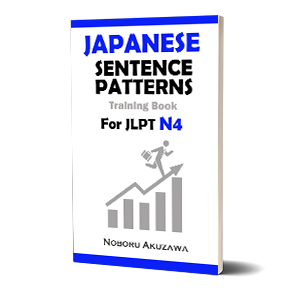Meaning: judging from; seeing that
Formation:
Verb-casual + ところを見ると
日本語 / にほんご / Japanese
(1) 日本語を流暢に話すところを見ると、ジェイクは日本で勉強したかもしれない / 勉強したかもしれません。
(2) 電灯が消えているところを見ると、子供たちはもう寝たようだ / 寝たようです。
(3) お互いに遠慮しあっているところを見ると、彼らはあまり仲が良くないようだ / 仲が良くないようです。
(4) 母がその知らせに驚かないところを見ると、その事実を知っていたにちがいない / ちがいありません。
(5) 店の前に長い行列ができているところを見ると、大変人気のレストランにちがいない / ちがいありません。
(6) 兄がぜんぜん準備をしていないところをみると、試験を受けるつもりはないようだ / 受けるつもりはないようです。
ことばと表現 / Words & Expressions
遠慮する【えんりょする】 to behave with modesty
準備をする【じゅんびする】to prepare
英語 / えいご / English
(1) Seeing as Jake can speak Japanese fluently, he may have studied in Japan.
(2) Seeing that the lights are off, children must have gone to bed already.
(3) Seeing at behaving with modesty each other, it seems that they are not getting along much.
(4) Seeing that my mother was not surprised at the news, she must have known the fact.
(5) Judging from the long lines of people in front of the store, it must be a very popular restaurant.
(6) Judging that my older brother is not preparing at all, it seems that he’s not planning to take the exam.
ひらがな / Hiragana
(1) にほんごを りゅうちょうに はなす ところをみると、ジェイクは にほんで べんきょうした かもしれない / べんきょうした かもしれません。
(2) でんとうが きえている ところをみると、こどもたちは もう ねた ようだ / ねた ようです。
(3) おたがいに えんりょしあっている ところをみると、かれらは あまり なかが よくない ようだ / なかが よくない ようです。
(4) ははが そのしらせに おどろかない ところをみると、そのじじつを しっていたに ちがいない / ちがいありません。
(5) みせの まえに ながい ぎょうれつが できているところを みると、たいへん にんきの レストランに ちがいない / ちがいありません。
(6) あにが ぜんぜん じゅんびをしていない ところをみると、しけんを うける つもりはないようだ / うけるつもりはないようです。
ローマ字 / Roman letters
(1) Nihongo o ryūchō ni hanasu tokoro o miru to, jeiku wa Nihon de benkyō shita kamo shirenai/ benkyō shita kamo shiremasen.
(2) Dentō ga kiete iru tokoro o miru to, kodomo-tachi wa mō neta yōda/ neta yōdesu.
(3) Otagai ni enryo shi atte iru tokoro o miru to, karera wa amari naka ga yokunai yōda/ naka ga yokunai yōdesu.
(4) Haha ga sono shirase ni odorokanai tokoro o miru to, sono jijitsu o shitteita ni chigainai/ chigai arimasen.
(5) Mise no mae ni nagai gyōretsu ga dekite iru tokoro o miru to, taihen ninki no resutoran ni chigainai/ chigai arimasen.
(6) Ani ga zenzen junbi o shite inai tokoro o miru to, shiken o ukeru tsumori wa nai yōda/ ukeru tsumori wa nai yōdesu.

























No comments yet.